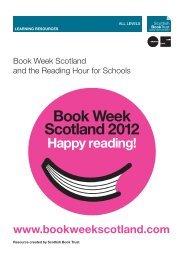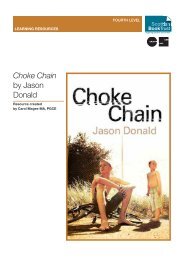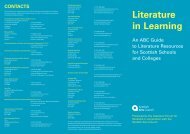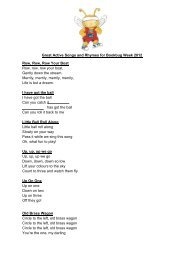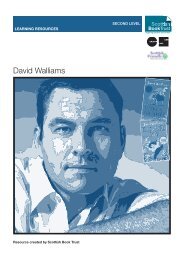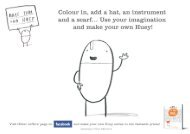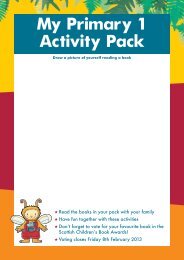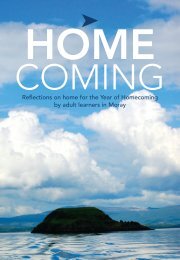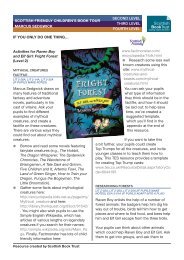Download PDF version - Scottish Book Trust
Download PDF version - Scottish Book Trust
Download PDF version - Scottish Book Trust
Create successful ePaper yourself
Turn your PDF publications into a flip-book with our unique Google optimized e-Paper software.
Count me inEverydayactivitiescan helpyoungchildrengrasp thebasics ofmaths,explainsProfessorAline-WendyDunlopProfessor Aline-Wendy Dunlopis chair ofchildhood andprimary studiesin the Faculty ofEducation,University ofStrathclydeWHEn MY first grandchild was threeweeks old, my younger daughter andI were visiting just before bath time.Calum was lying kicking on his bathtowel. His admiring audience sat close in, faceswithin his view. He looked from one adult face toanother in turn. en his mum went to fill hisbaby bath. Calum again looked round the faces– one, two, three – where was his mum? One,two, three, and he cried.As a fond granny with a passionfor child development, I declared,“Calum’s going to be great at maths –he’s counting already!”How can we ensure that children growup with a useful grasp of mathematicsand numbers? Opportunities to developbasic numeracy surround us in oureveryday lives. Parents and carerstypically chat to even very youngchildren about the mathematical tasksthey themselves undertake.Almost every activity during theday provides opportunities to talkabout numbers with little ones. esecan include:• Writing a shopping list with ‘how many’ of eachitem is needed• Pressing the button for the right floor in the li• Spotting the bus number at the bus stop• Buying enough sausages for tea• Making sure there is a cup or piece of toast orapple for everyone• Looking at books such as e Very HungryCaterpillar which make numbers, counting andsequencing part of the story• naming and counting everyone in a family photo• Singing songs such as ‘One, two, three, four, five,once I caught a fish alive’• Playing with fingers and toes• Pouring water in and out of containers in the bath• Stacking beakers by size• Counting candles on birthday cakes• Sorting the washing into piles• Picking up shells, leaves, sticks, clothes pegsand toys• Counting the steps upstairs to bed.ese everyday activities indirectly and quitenaturally help little children to enjoy ‘the languageof maths’ from an early age.Most children will soon notice if there is abanana short at teatime, if there aren’t enoughsweeties to go round or if one foot has lost its sock.With the help of their parents, children willnaturally develop a playful understanding ofnumber, colour, shapes, groups, one-to-onematching, counting, classifying and sequencing.A child who uses number concepts in thesepractical ways is already a mathematician!A strict or formal approach to numeracy is notneeded with the youngest children. But an adultwho notices maths and numbers in everydaythings can help children to be observant too,to count, to use number names and to have funin a practical way. ●<strong>Book</strong>bug 11





